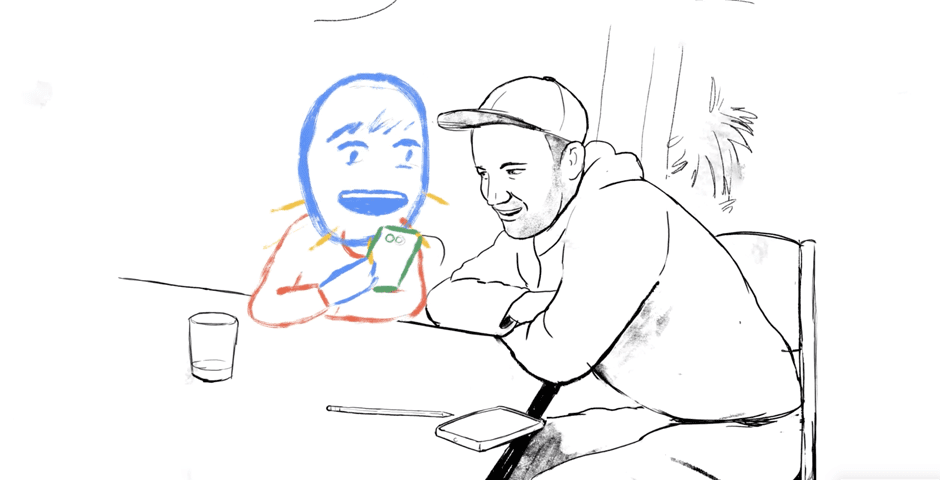
Watch
Bear 71's 5-Word Speech, 17th Webbys
What does the job of Chief Digital Officer at the National Film Board of Canada entail?
I oversee our two digital studios in Vancouver and Montreal that have produced the interactive projects, mobile apps, and VR apps that have won over 10 Webby Awards. I also oversee the team that develops our organization’s websites and apps, where we’ve digitized several thousand of the films in our collection and made that available on our website and apps, as well as with value-added content in our education site.
How does an institution like the NFB innovate for digital spaces?
The NFB has a long history of innovating and incubating in the intersection of story, form, and technology. We started our digital shift in 2008 when we founded the two digital studios and digitized our collection. In that time we’ve produced over 60 interactive projects including works in 360 video, interactive VR, and mobile apps. We’re publicly funded by the Canadian government and have a mandate to tell socially relevant stories that reflect Canada to ourselves and Canadian points of view to the world. We also have a strong culture of experimentation which allowed us to make the transition to a digitally-minded organization. We believe that the work we do benefits the progress of our field of work and can be leveraged by private companies that partner with us.
“ The NFB has a long history of innovating and incubating in the intersection of story, form, and technology.”
NFB won a 2013 Webby for its interactive web documentary Bear 71. How did that work come to exist as an interactive, digital documentary instead of a traditional work of film?
Bear 71 started as several hard drives of low-resolution images of animals in the wild from infrared motion-triggered surveillance cameras used by Parks Canada to study animal movement patterns in the Bow River Valley in Canada. We identified one story in the study of Bear 71 and realized that the way in which we live our lives, through the lens of science and technology, studying animals parallels how surveillance is used in our cities. The project became clear that it should be an interactive documentary when we decided to tell the story through a combination of linear audio narration and building a world using data visualization and representing a sampling of 100 animals in this world—all moving through this world on their own paths. The project for us critiques our disconnect from nature because of technology and ultimately declares that we’re all “Bear 71.” The project was a great point in time for the NFB and has been credited with defining the term “interactive documentary.”We built the original site in flash and as we know flash websites will be inaccessible very soon. Because the project was always built in a 3D world, we realized that the project was the perfect candidate to adapt to VR. We started experimenting on VR for the web, called webVR, last year through Mozilla, and last summer we partnered with Google and IDFA Doclab to create a webVR version of Bear 71.
How and when did NFB.ca, the National Film Board of Canada’s online screening room, come into existence?
In 2009 we decided that the NFB had a treasure of films in its collection and that it made sense to bring this to the web, so we created the screening room website and then apps where people could view our documentary and animation films. We also realized that many of us remembered the NFB from films being screened in our classrooms as children, so we decided to provide all our content for consumption in the classroom in Canada with value added material.
The Internet changes so rapidly that it’s essential to keep innovating to stay relevant (thus, “Internet Or Die”). What does it mean “to Internet” at the National Film Board of Canada? What does that look like in practice?
For us it means constantly being aware of the latest in how audiences create and consume content, experimenting in new forms of storytelling, and embracing new technologies in both the creation and distribution of our works. A great example is what we’re doing with Bear 71. We’re very excited to announce that next week Bear 71 VR is going to be released in conjunction with the latest version of Chrome for Android, which supports WebVR on the Daydream View headset. You’ll be able to see Bear 71 in any VR headset using a browser that supports WebVR, from the Daydream View to Google Cardboard to the Oculus Rift and HTC Vive. If you don’t have a VR headset, you’ll still be able to experience the project on your mobile phone, tablet, laptop, and desktop. This is something that’s really important to us with the fragmentation of the Internet—that we support open web standards which allow everyone to enjoy our content. This is something that we strongly believe in being a public institution.
Has there been a specific change or trend online in the past 5 years that has most opened up new doors for the NFB to extend its outreach digitally?
There has been so much change in the last five years. We’ve been able to create our own 3D render engine for one project, we changed the way we tell stories for tablets, and now we’re making sure all our projects provide a great experience on mobile—whether it’s videos on closed garden social media platforms to mobile responsive websites to VR apps. But we’re very excited by the promise of webVR because it connects a lot of the new efforts in VR and mobile and gives us a new platform for creation that uses the platform that has gotten us here—the web.
The NFB seeks to showcase works that take stands on important global issues, be it human rights, environmental impact, etc. What opportunities do digital spaces provide in telling these stories?
We’ve found that the Internet, the web, and digital creation has allowed us to connect the user, our content, interaction, and the amazing strengths of the Internet like APIs all together in a way that isn’t possible in other mediums. One of my favorite projects is Test Tube with David Suzuki, where your screen was an analogy for a test tube and tweets being pulled in from the Twitter API represented the growth of our global population that you could interact with while watching a video of David Suzuki explaining the connection between overpopulation and our planet running out of resources and food.
We see great potential again in doing this with new technologies like VR and of course webVR because it allows us to combine everything we’ve learned over the last 10 years with everything we’re experimenting with today.
We’d like to thank Loc Dao for sharing his insight on documentary film in the digital age. If you’re new to the Film Board of Canada’s work, there are plenty of Webby-winning projects to choose from, but their acclaimed interactive documentary Bear 71 is a great place to start. Watch that and more on their website.
This rounds out our Internet Or Die interview series for the 21st Annual Webby Awards. But don’t forget—there’s still time to enter your best digital work before the Extended Entry Deadline TOMORROW, Friday, January 27th. Enter now!









